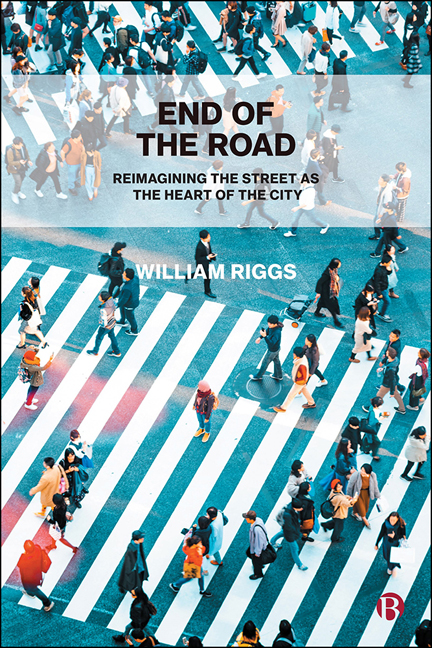Book contents
- Frontmatter
- Dedication
- Contents
- List of Figures and Tables
- Acknowledgments
- 1 Introduction
- 2 A Recent History of the Street
- 3 The Street for Transport
- 4 The Street as Economic Space
- 5 The Street as Social Space
- 6 The Street as Cultural Space
- 7 The Street as a Natural Space
- 8 Challenges to Ending the Road
- 9 Beyond Streets: Integrating Behavior
- 10 A Window into the Future: New Vehicles, New Streets
- 11 A Call to Action: Streets as the Heart of the City
- Appendix
- Notes
- References
- Index
5 - The Street as Social Space
Published online by Cambridge University Press: 12 October 2022
- Frontmatter
- Dedication
- Contents
- List of Figures and Tables
- Acknowledgments
- 1 Introduction
- 2 A Recent History of the Street
- 3 The Street for Transport
- 4 The Street as Economic Space
- 5 The Street as Social Space
- 6 The Street as Cultural Space
- 7 The Street as a Natural Space
- 8 Challenges to Ending the Road
- 9 Beyond Streets: Integrating Behavior
- 10 A Window into the Future: New Vehicles, New Streets
- 11 A Call to Action: Streets as the Heart of the City
- Appendix
- Notes
- References
- Index
Summary
The road belonged to us then; we sang in it, we argued in it, while the horse-bus flowed softly by … (Le Corbusier in Berman, 1983)
Singing, arguing, belonging; even Corbusier, who is sometimes derided for his views on transportation, believed the street was home for many things other than movement. Just as we saw with the case of Exhibition Road in London, the idea of interaction between people on the street is very important. Roadways of all kinds provide conduits that make cities work. They provide activities, socialization, encounters and confrontations. And I believe these are the kind of words (and ideas) that kill the traditional definition of what a street can be. These words bring about images of people singing, playing and connecting with one another, or even occupying streets for protest.
For example, in 2010 and 2011 pedestrians occupied the streets in Cairo, Egypt, shaping what would become the Arab Spring. I remember turning on the news and being blown away by the massive crowds across Tahrir Square. I thought “there is the power of the street.” Likewise in the US, many people fled to the street during the 2011 Occupy Wall Street movement and for the commemoration of one of the most important events to happen on the street— the 1965 “Bloody Sunday” march against segregation in Selma, Alabama, where police brutalized protestors on the street during the Civil Rights Movement. These activities have importance because they frame the social action that is essential to democracy and a free society.
I like to think about the words of former US President Barack Obama when considering this. In his 2015 speech commemorating the events in Selma, he spoke about people who met near a bridge to take their message to the street and changed the future of American society. He proclaimed,
“The Americans who crossed this bridge were not physically imposing. But they gave courage to millions. They held no elected office. But they led a nation. They marched as Americans who had endured hundreds of years of brutal violence, and countless daily indignities – but they didn’t seek special treatment, just the equal treatment promised to them almost a century before …. they proved that nonviolent change is possible; that love and hope can conquer hate.” (Obama, 2015)
It is fascinating to think about how streets have this kind of power.
- Type
- Chapter
- Information
- End of the RoadReimagining the Street as the Heart of the City, pp. 61 - 79Publisher: Bristol University PressPrint publication year: 2022

